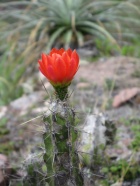|
On the way to Ollantaytambo we stopped for a
drink at La Casona de Yucay, a colonial house where liberator Simon
Bolívar stayed in 1825 and is now an attractive hotel. With more time we
would have liked to stay there and do some more hikes in the area. We
arrived at the pretty village of Ollantaytambo (a name that took me a
long time to remember!) just in time to visit the Inca fortress above it
before dark.
21 January. By staying in Ollantaytambo, we
cut the train ride from Cuzco to Aguas Calientes in half so it just took
us 2 hours. As was to be expected with its proximity to world-famous
Machu Picchu, Aguas Calientes was mega-tourist country. Buses to the
ruins left the village as soon as they filled up, and that was every few
minutes. And, of course, Machu Picchu was thick with tourists. But,
considering this was the rainy season, we were extremely lucky with the
weather. In fact, the rain we experienced in Lake Titicaca on the day of
our arrival marked the end of bad weather that had lasted for 10 days.
The 4-hour train ride back to Cuzco was rather tedious after such a long
day and it wasn't improved by a Japanese man who settled himself in the
seat opposite us and let out loud burps! However, the last 40 minutes of
the ride were more entertaining: the train has to make a steep drop to
Cuzco, too steep for normal railroad curves, so this is accomplished in
four back-and-forth switchbacks. At the same time, we got a superb view
of Cuzco by night with the floodlit church and cathedral on the Plaza de
Armas.
22 January. We had a day and a half to visit
the main points of interest in the beautiful town of Cuzco. My priority
was to visit the cathedral ever since Tony Morrison had told me that
The Last Supper painting shows that Jesus and his entourage were
about to tuck into the Andean speciality of roast guinea pig! The
excellent guide in the cathedral added another observation in that the
person to Jesus´s left was the only one who did not sport a beard. The
person could well have been a woman, tallying with the controversial
theory woven into the plot of Dan Brown´s novel The Da Vinci Code
that Jesus was in fact married to Mary Magdalene.
The other interesting site that we visited was the Coricancha which used
to be the Inca Empires´s richest temple. The temple walls were lined
with some 700 solid-gold sheets, each weighing about 2 kg. until the
Spanish arrived and looted the place, and then proceeded to build the
Church of Santo Domingo on top of it, leaving only the Inca stonework.
On our first evening in Cuzco we discovered an excellent restaurant on a
street off the Plaza de Armas called the Cava de San Rafael: tasteful
decor, good service, delicious food, and the jazz music performed by a
talented duo made a refreshing change from the usually unavoidable
panpipe music.
23 January On our return to Arequipa airport by airline, we were happy
to see HoneyMooney still waiting there patiently for us. We spent one
more night at the Casa de Mi Abuela and dined at a Moroccan restaurant
for a change.
|

We saw many of these cactus flowers
|

Waterfall near Pisac
|



